The Great Ocean Walk: Birds and Animals
Recently I wrote about taking a week to walk the Great Ocean Walk. During that time, I saw a variety of birds and animals, and stopped to watch and take photos where I could. Some were ones that I’d see relatively frequently at home, others I encounter much more rarely and so were a lot more memorable.
Some of them obligingly stuck round for me to photograph them. Others didn’t. They ranged from from koalas and wallabies to snakes and spiders, from mighty eagles to tiny wrens - and there were even dinosaurs.
Disclaimer
To be clear: I’m not expert at identifying birds and animals. I am able to recognise and name more species than I was when I started seriously photographing them, and I try to confirm online, but none of the names given here are guaranteed.
The first encounter
Each encounter is a bird or animal living life in its own way - often showing no interest in you at all. I find there’s something special about the very first encounter. Whatever it is, it reminds me that I can’t know what I’m going to see - just be ready to appreciate it.
For this particular walk, this was the first one:
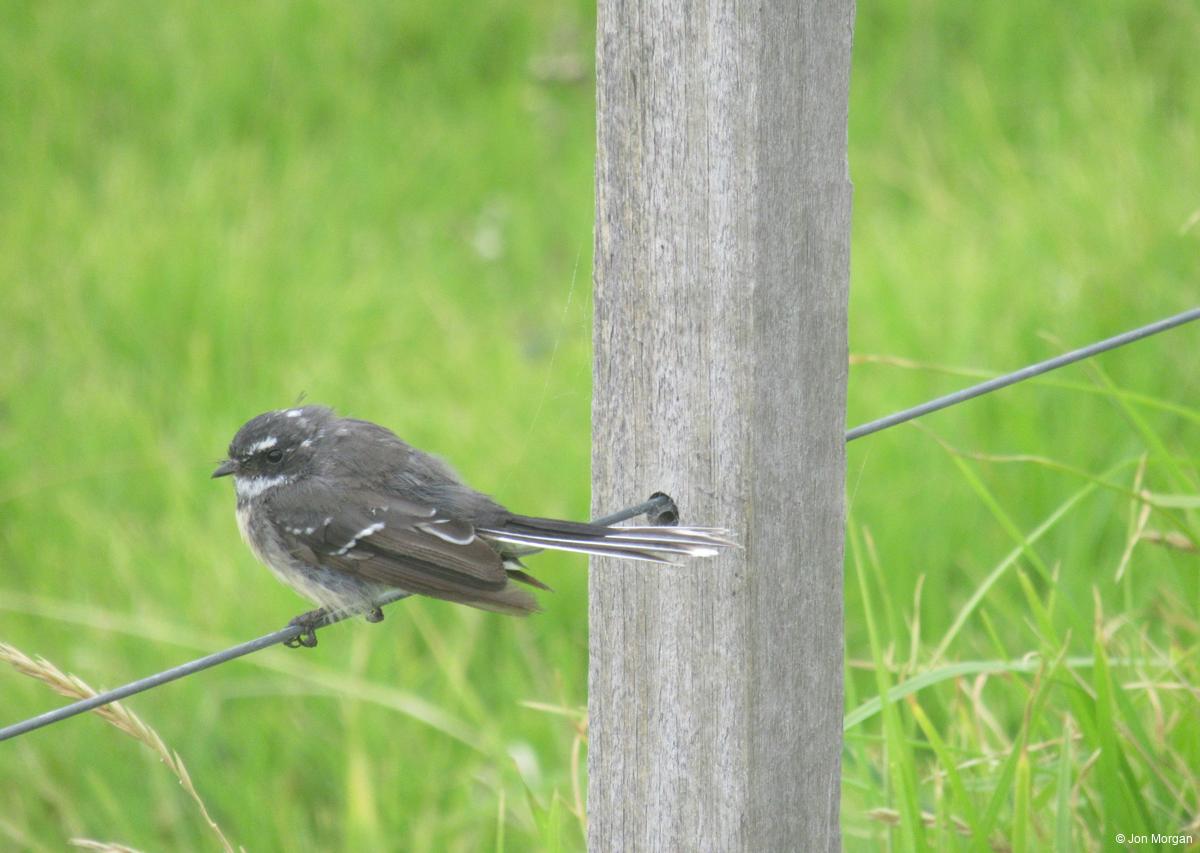
I was walking beside the Great Ocean Road, shortly after leaving Apollo Bay, and there it was on the other side of the road. It was dancing on the fence and not worrying about me at all.
The most anticipated encounter
Ask anyone what animals are particularly Australian, and you’ll probably hear “koala” as one of the first ones. I’ve always loved them, but I don’t often see them in the wild (in fact, I think the first one I’d seen in the wild was near Cape Otway when I first visited the area in 2015). So I really hoped to see one this trip.
I knew that the first campsite was considered one of the best places to see them, so after setting up my tent and eating I went for an evening walk. I looked up into one of the towering gum trees, and saw a shape that reminded me of a slightly larger possum.
Sure enough, there it was:

I think that was the first koala joey I’d seen in the wild, so that was a bonus. It was active, too, climbing onto its parent’s head while the long-suffering creature was just trying to get some sleep.
Given this was after sunset and taken with a 1/8 second exposure on full zoom without a tripod, I was just amazed it came out at all.
A most unexpected encounter
I’ve seen wedge-tailed eagles soaring high overhead, and I’ve occasionally seen ones up close inspecting the road-kill by the side of the road. What I’d never seen before, and don’t think I’ve seen since, is an eagle flying low directly overhead:

They’re big. Really big.
It was one of the most memorable encounters from the entire walk: The hushed sound of its wings, its flight path as it patrolled back and forth and slowly moved further away, and just the sheer size of it.
Reminders of a dangerous country
Sometimes when I listen to non-Australians talking, I sense the idea that Australia is a uniquely dangerous place with the scariest animals about. That doesn’t match my experience. I’ve lived here all my life, and in my experience the worst of the dangers are either far to the north of me, out in the ocean, or both.
The one exception, really, is snakes. I don’t see that many snakes in the wild, and the ones I have seen don’t seem particularly interested in attacking me. But I do assume that any snake I see is poisonous, and so try to avoid upsetting them.
On the Great Ocean Walk, I didn’t expect to see snakes round every corner, but I think I did expect to see at least one, and I wasn’t disappointed:

At the time, I thought it was dead - just road kill left lying by the side of the road. It was certainly completely unmoving. But I wasn’t about to go closer and check.
Later I realised that it was suspicious that it was lying in the only patch of sunlight among shadow. I now suspect it was alive and sunning itself, but not in the least interested in me. And I was happy for it to stay that way.
As it turned out, it wasn’t the only snake I saw, but it was the only one I photographed. There was another odd one I saw - small and green and running down a rock with a strange sideways twisting motion. I think I was quick to draw my camera, but it was quicker, so no photograph.
Moving on to other reptiles, there were a lot of these:

To the best of my knowledge, they’re completely harmless.
Among the waves
I sense by this stage, the question might be coming: This is the Great Ocean Walk, after all - where are the waves?
Fear not, for here are some!
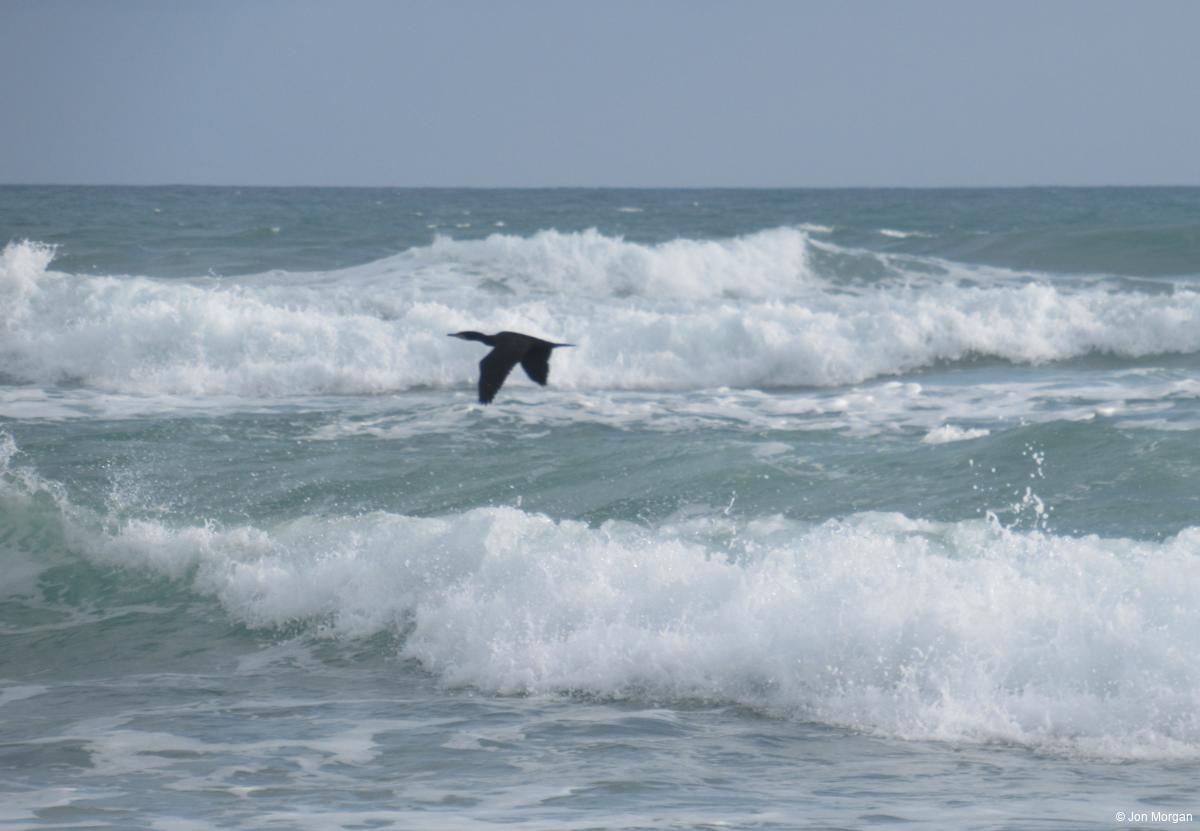
Seagulls feature, of course:
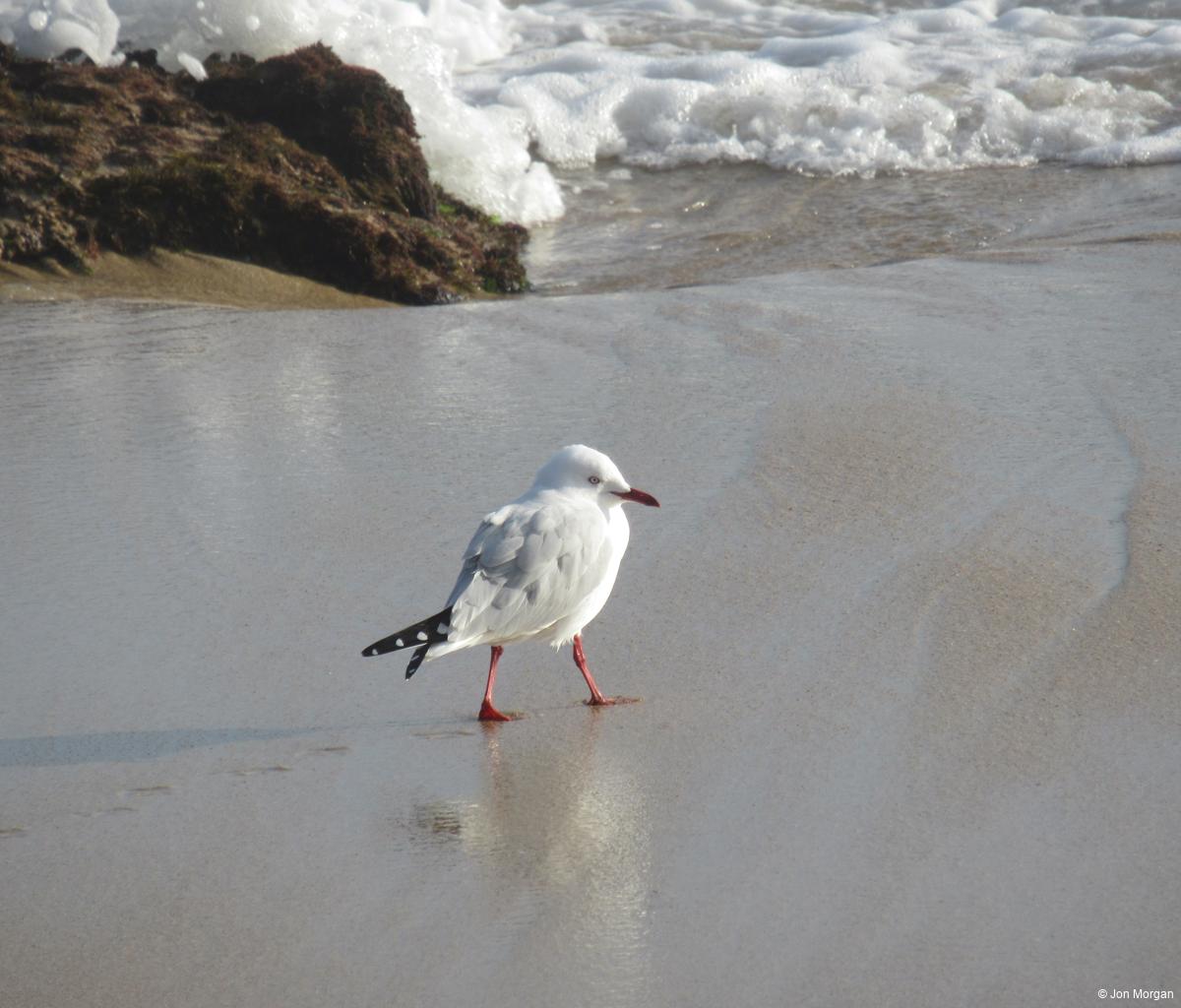
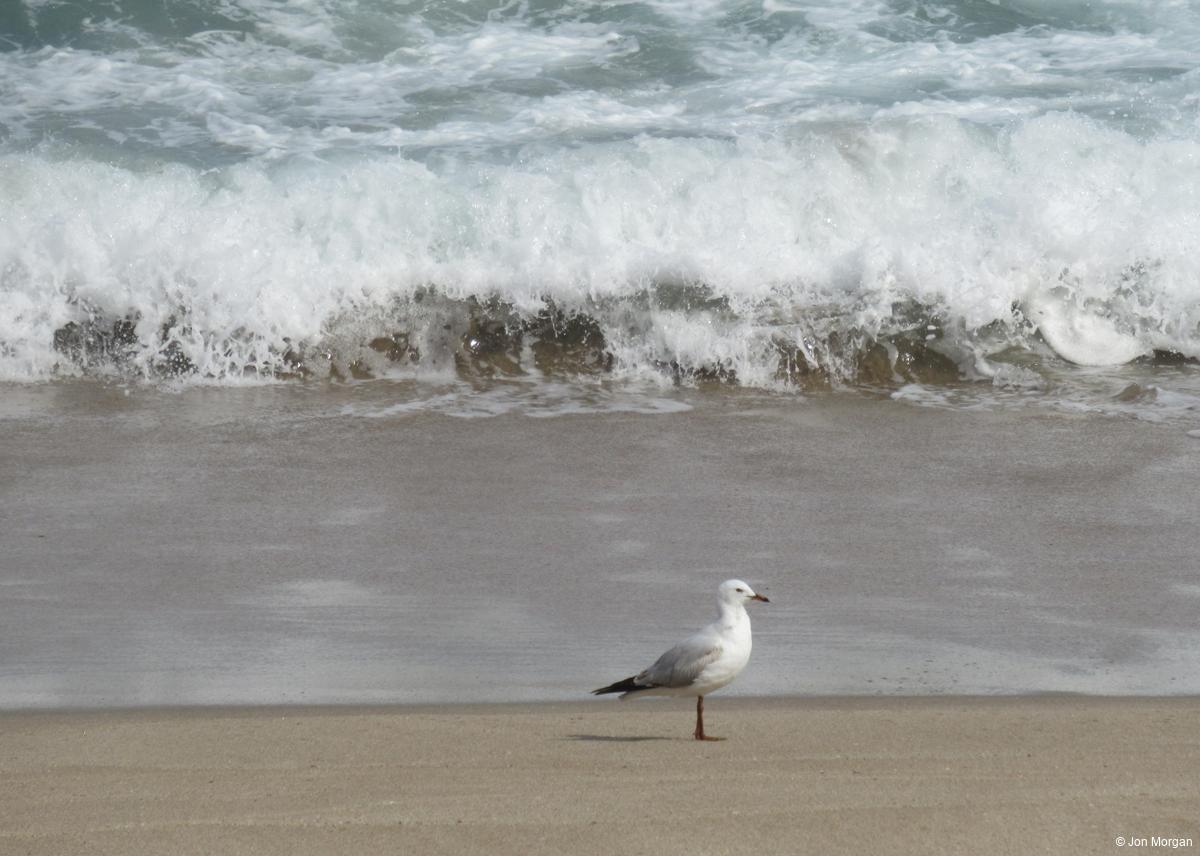
But there were also waders like the oystercatchers:
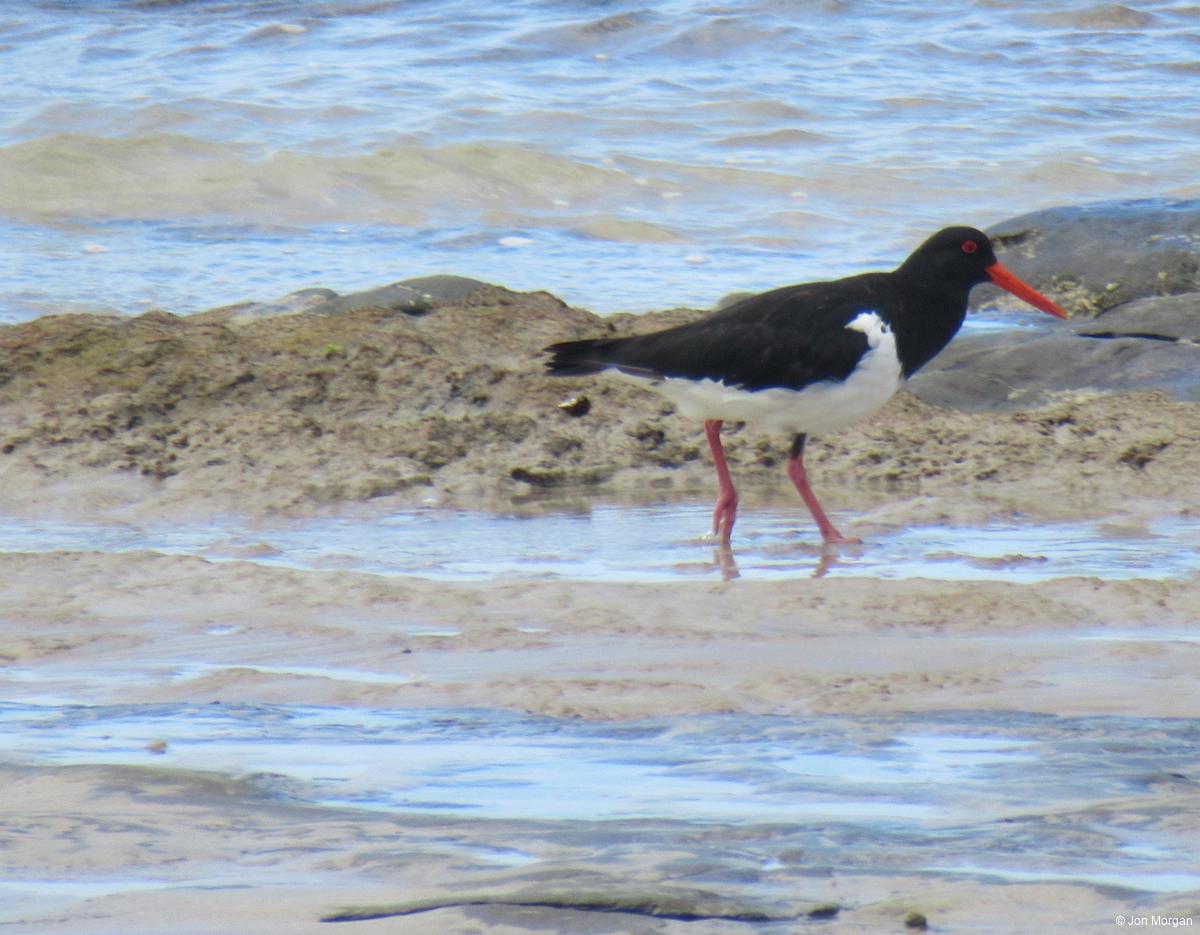
One of Victoria’s most threatened birds is the hooded plover. They’re given to nesting in the dunes, so you’re always encouraged to walk below the high tide mark so as not to disturb them.
I know other times I’ve thought I might have seen hooded plovers, they turned out to be completely different birds. But from pictures online it looks like these might actually be them:
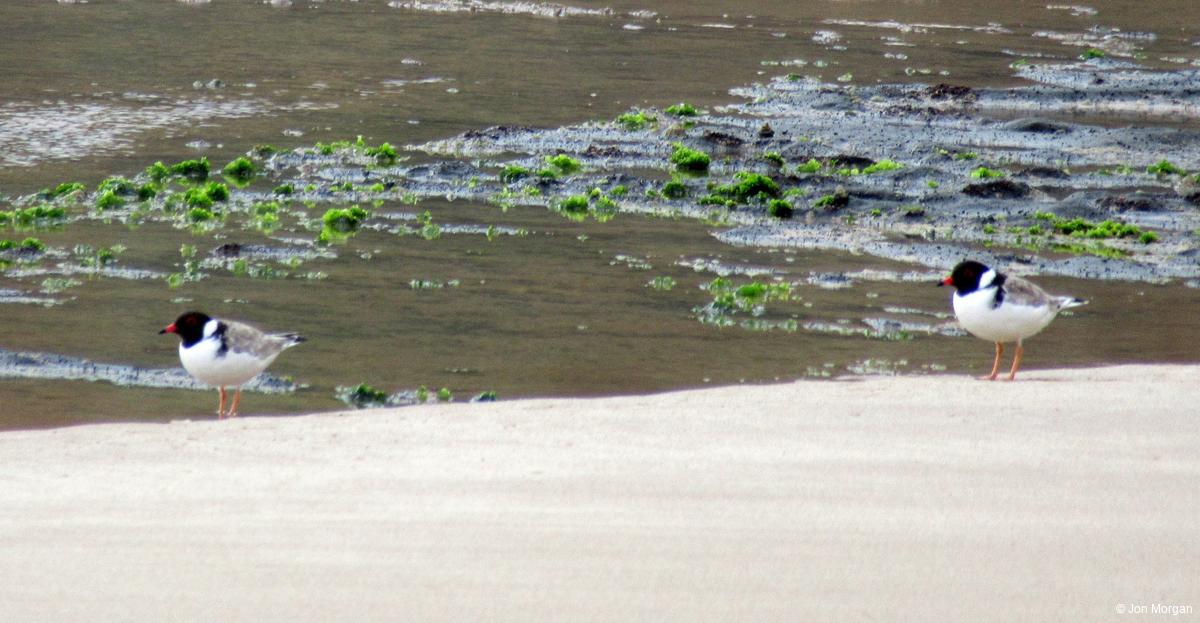
The wave action wasn’t just limited to birds, either. It was a long-distance walk in March along an area with fierce waves, so there was no swimming and definitely no sharks. But at least I saw some fish:
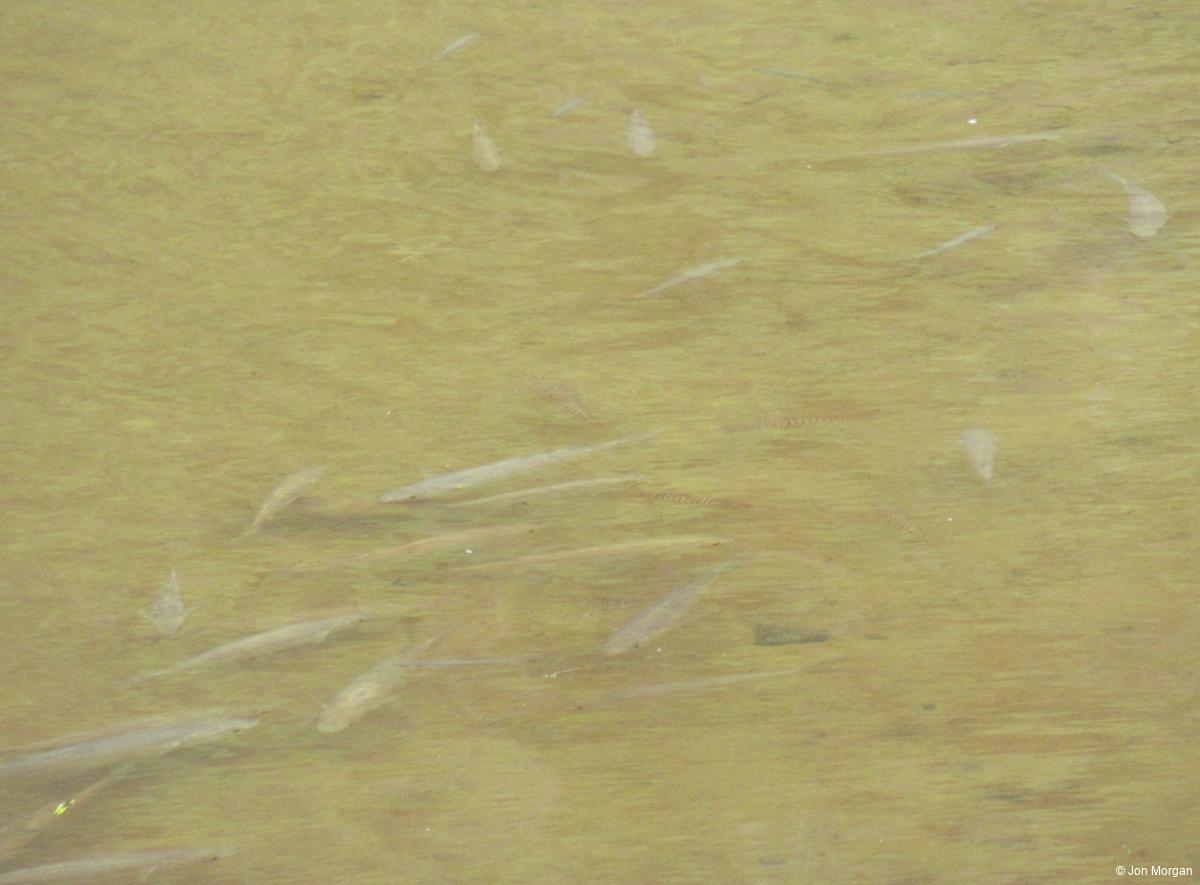
Spiders
Talking of ocean pictures, I particularly liked how the spiders fit in to this picture:

And there were some nice spider webs on Wreck Beach:
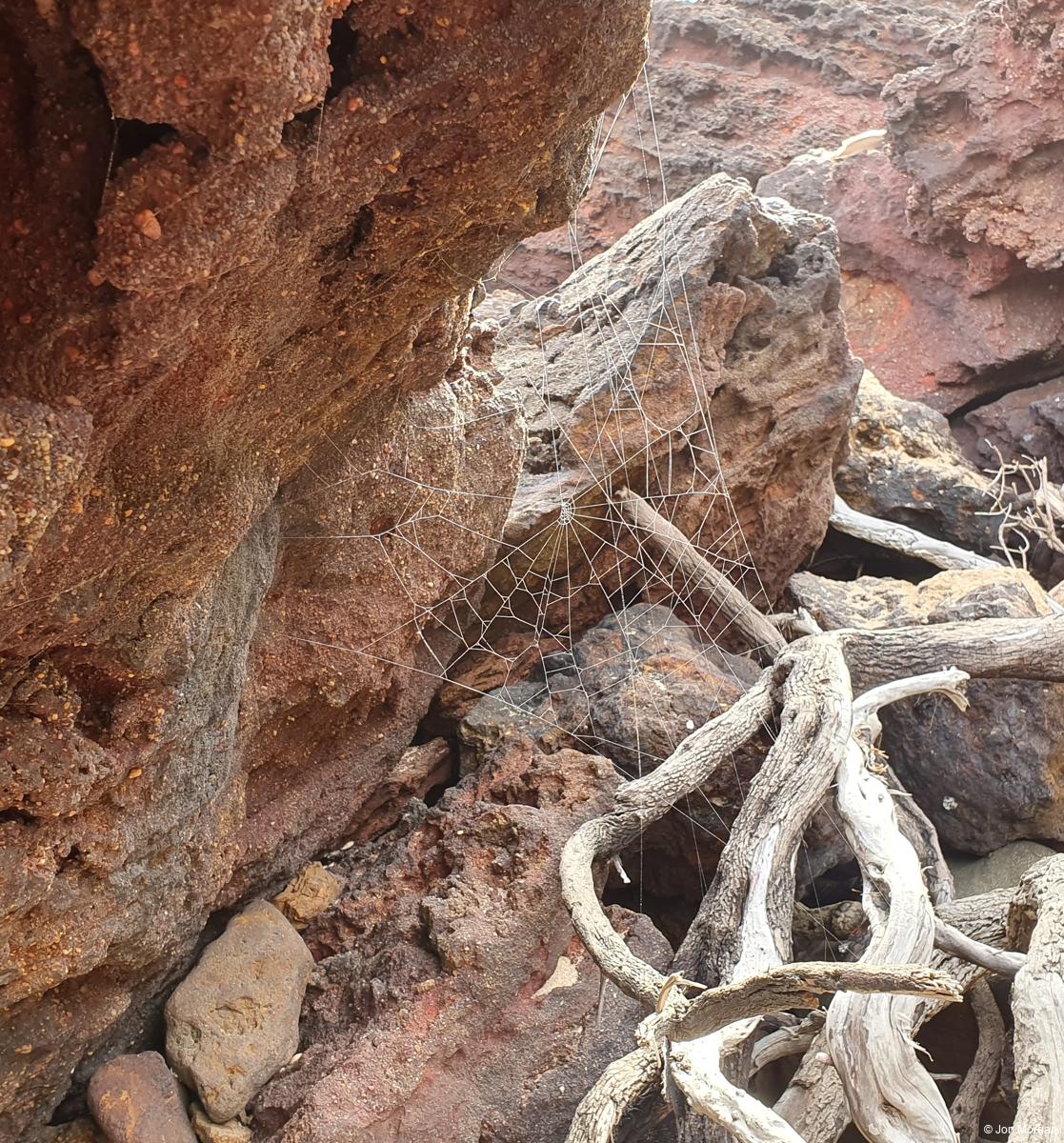
Unlike the snakes, I don’t tend to assume that spiders here are poisonous or dangerous (though redbacks can be). However, as my brother likes to remind me, we haven’t had a spider-caused death since 1979.
Seeing actually dangerous animals
You want to see the actual animals responsible for deaths in Australia? Well, you’re looking at them:

The Australian Geographic explains.
There were a few places en route where we passed agricultural areas, mostly among rolling hills. It added variety, and the mooing of cattle and baaing of sheep could be unexpectedly restful. There were even a couple of places that reminded me of the Pennine Way, which is quite impressive given how far the Pennine Way is from the ocean (though, unlike the Pennine Way, there was no walking through the verdant pastures).
Not to mention spiky animals
One of my favourite animals to encounter in the wild is the echidna. On this walk I saw a few, with this probably being the best picture:
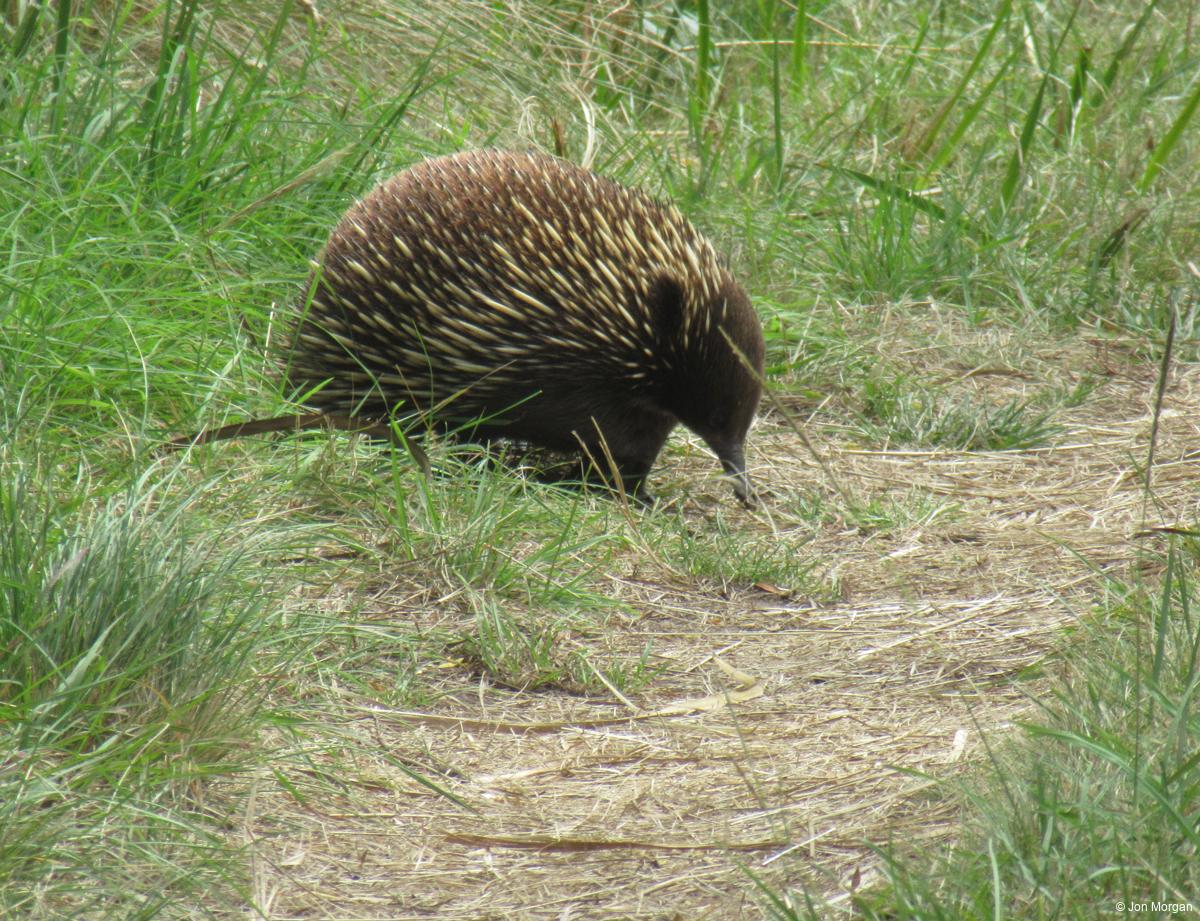
Australia’s pouch-bearing marsupials are unusual enough mammals on the world stage, but the echidnas are egg-laying monotremes - even more unusual. They’re also our version of the ant-eater, or perhaps of the hedgehog.
I just love how they go about living their own life and comfortably ignore you. They don’t particularly worry about being quiet or staying unobtrusive - they just wander through bushes and grass making as much noise as they like. Yes, if you disturb them they can go still and huddle up with their spines for protection, but mostly they seem pretty chill about life. After all, don’t you know there are ants to find?
Incoming!
There was one bird that took off toward me right as I was taking a picture:
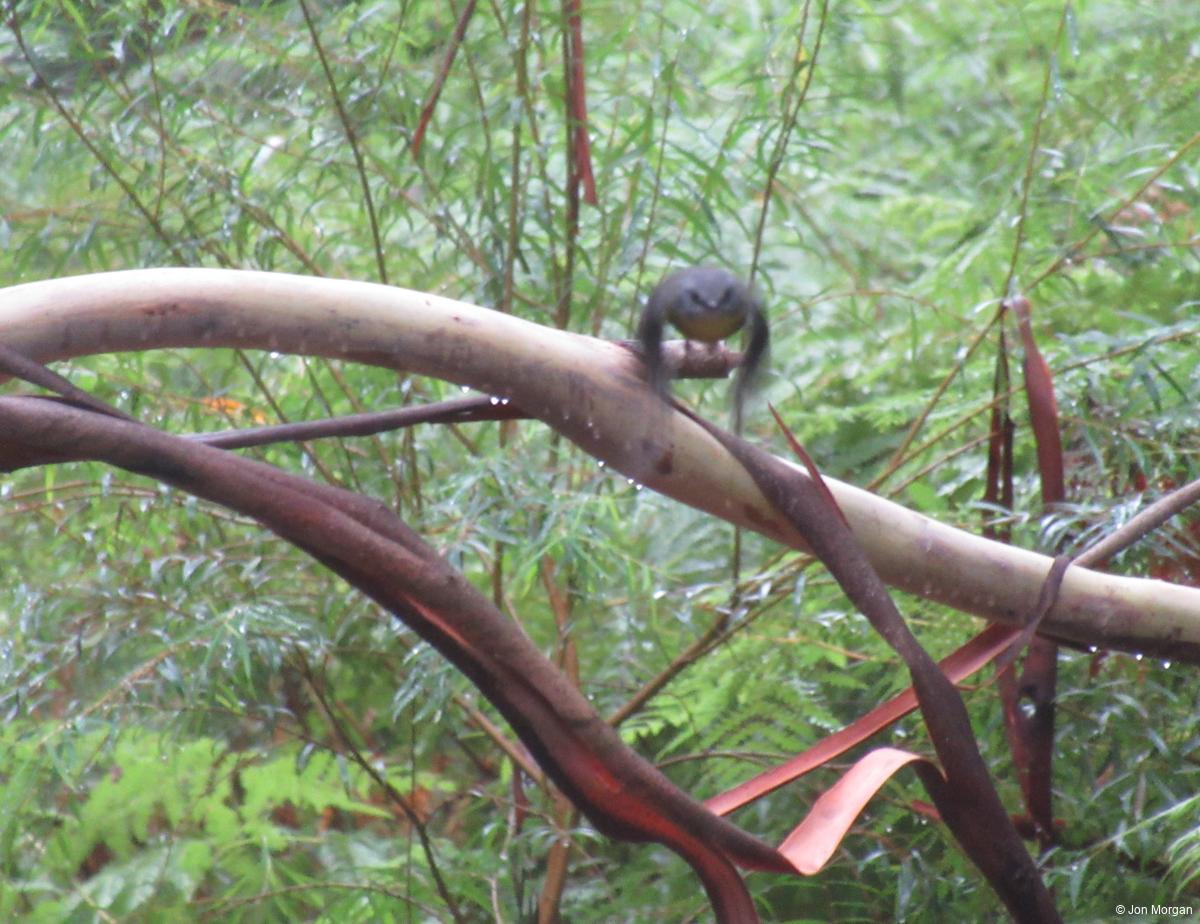
Before then perching comfortably on a branch behind me. Here it is:
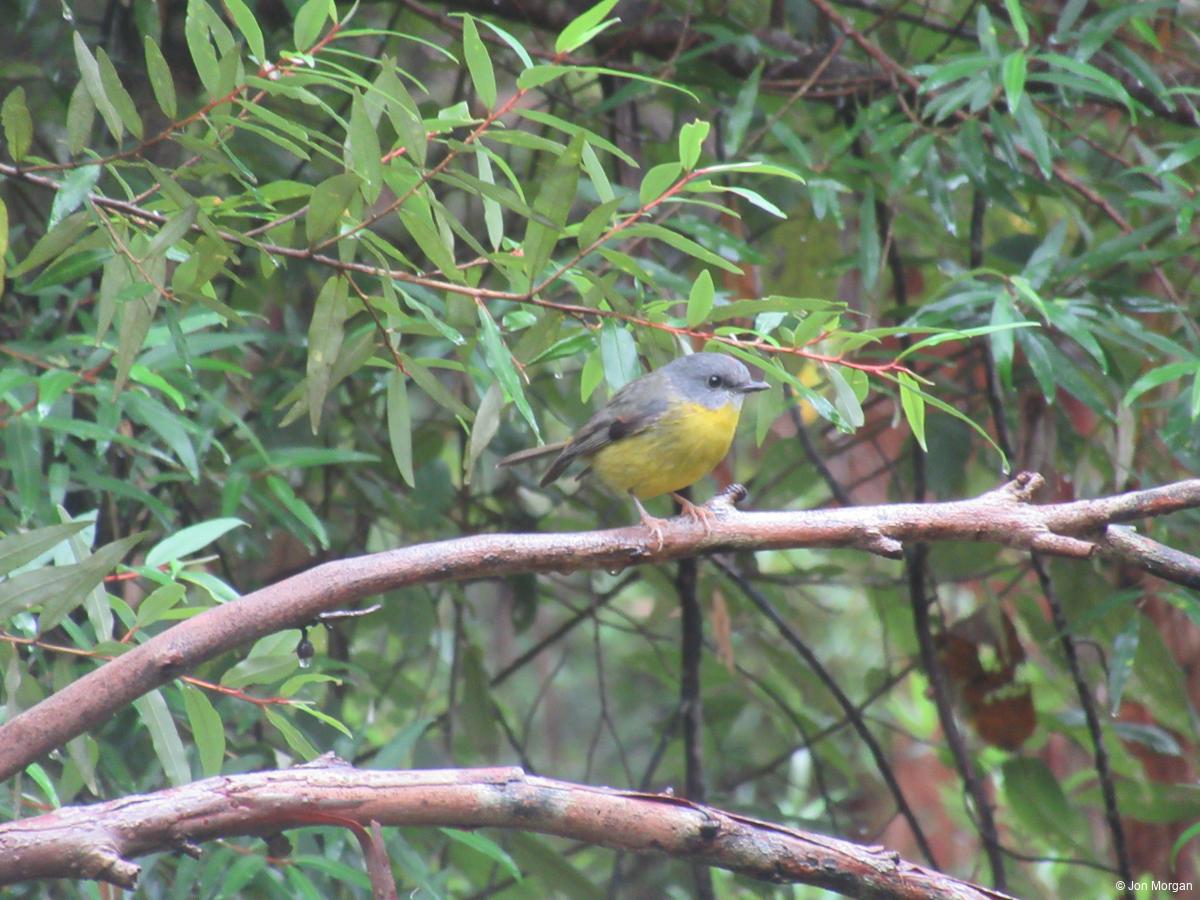
Taking a bath
I’ve already mentioned koalas at the first campsite, but they weren’t the only ones hanging round campsites.
One memorable one was this yellow robin that realised our tap made a good bathing spot:
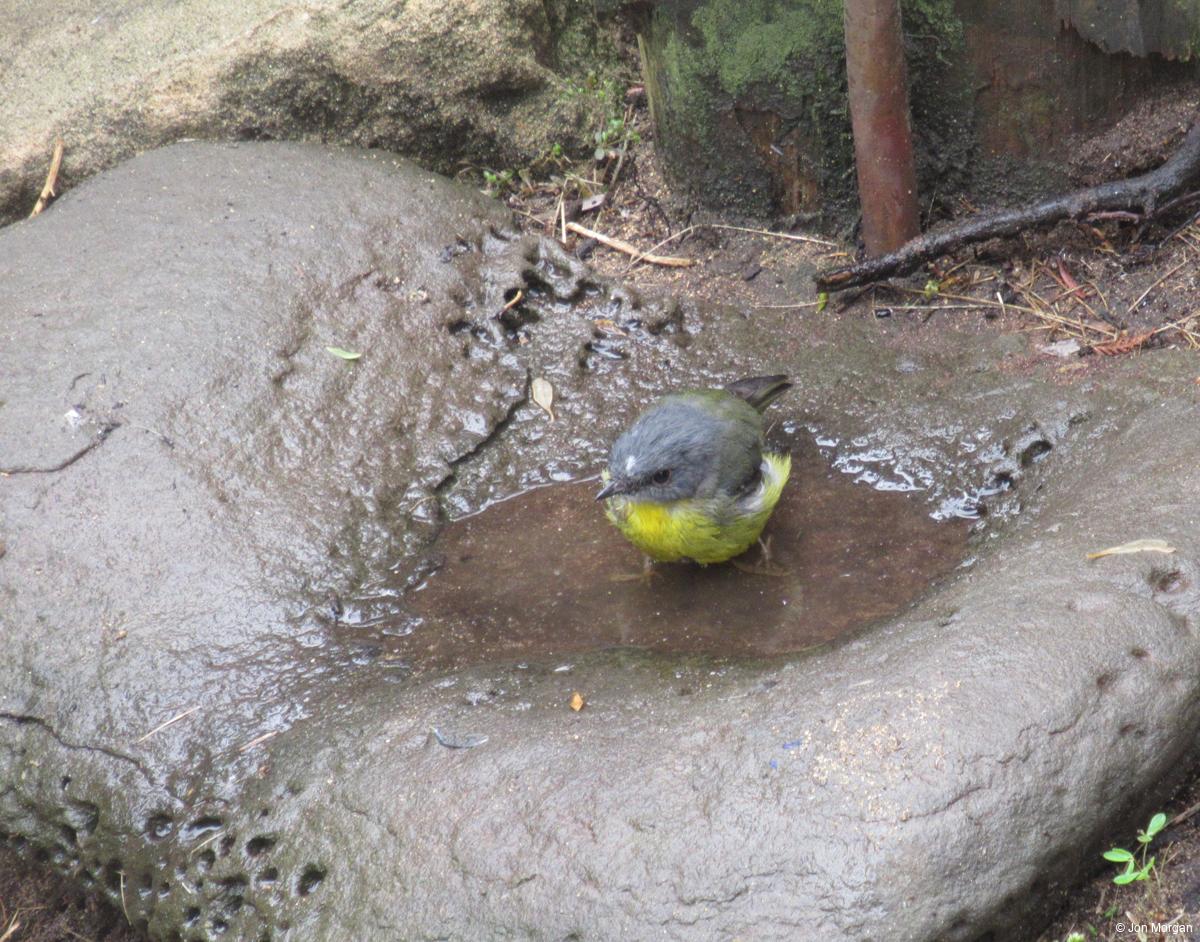
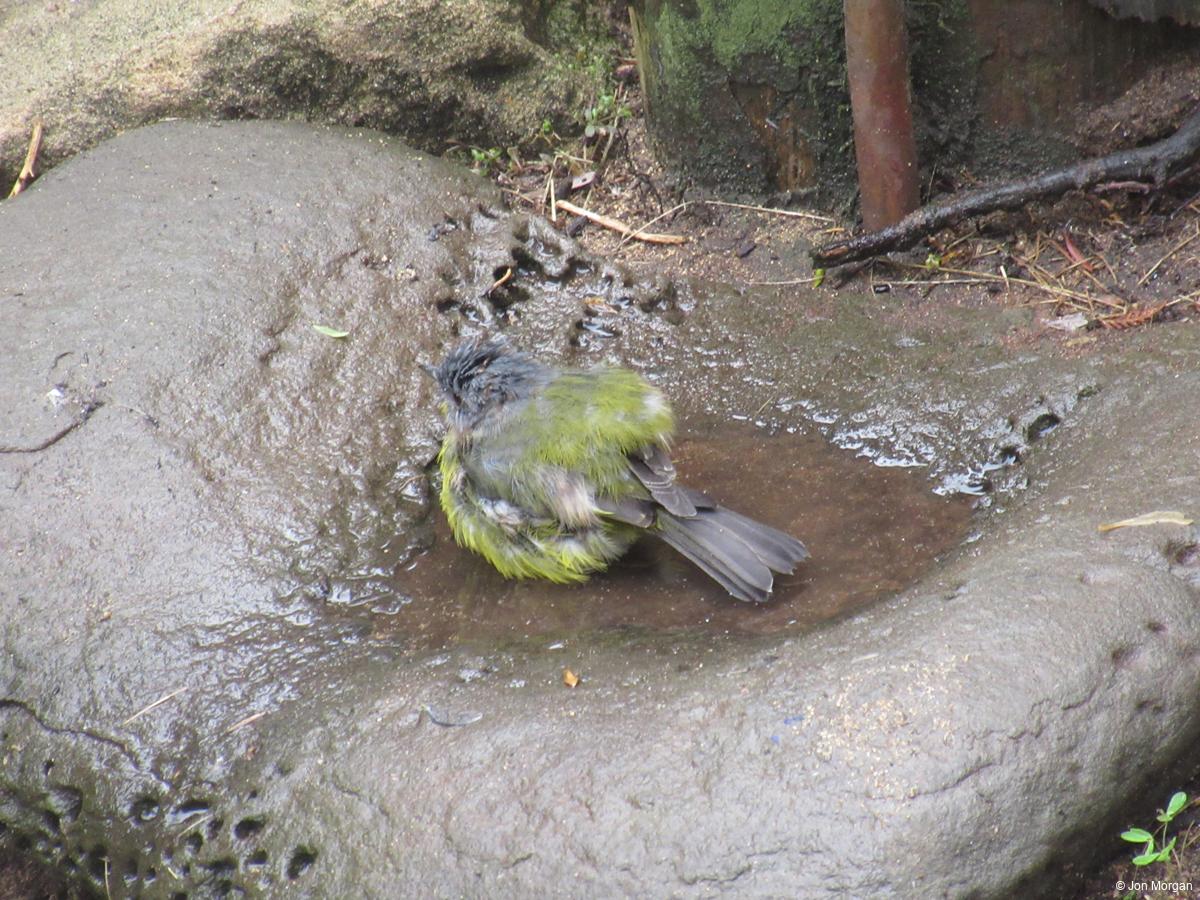
Like all the drinking water on the walk, the tap carried a sign “Untreated rainwater - do not drink” (don’t worry - I treated it before drinking). No comment on whether bathing was advisable, but the robin seemed to survive it.
Squawking outside my tent
One of the more colourful visitors was the bright gang gang. I’d been in my tent recovering from getting up early for sunrise, and heard squawking nearby a few times. I wasn’t sure whether the squawker would still be around when I emerged, but it was:
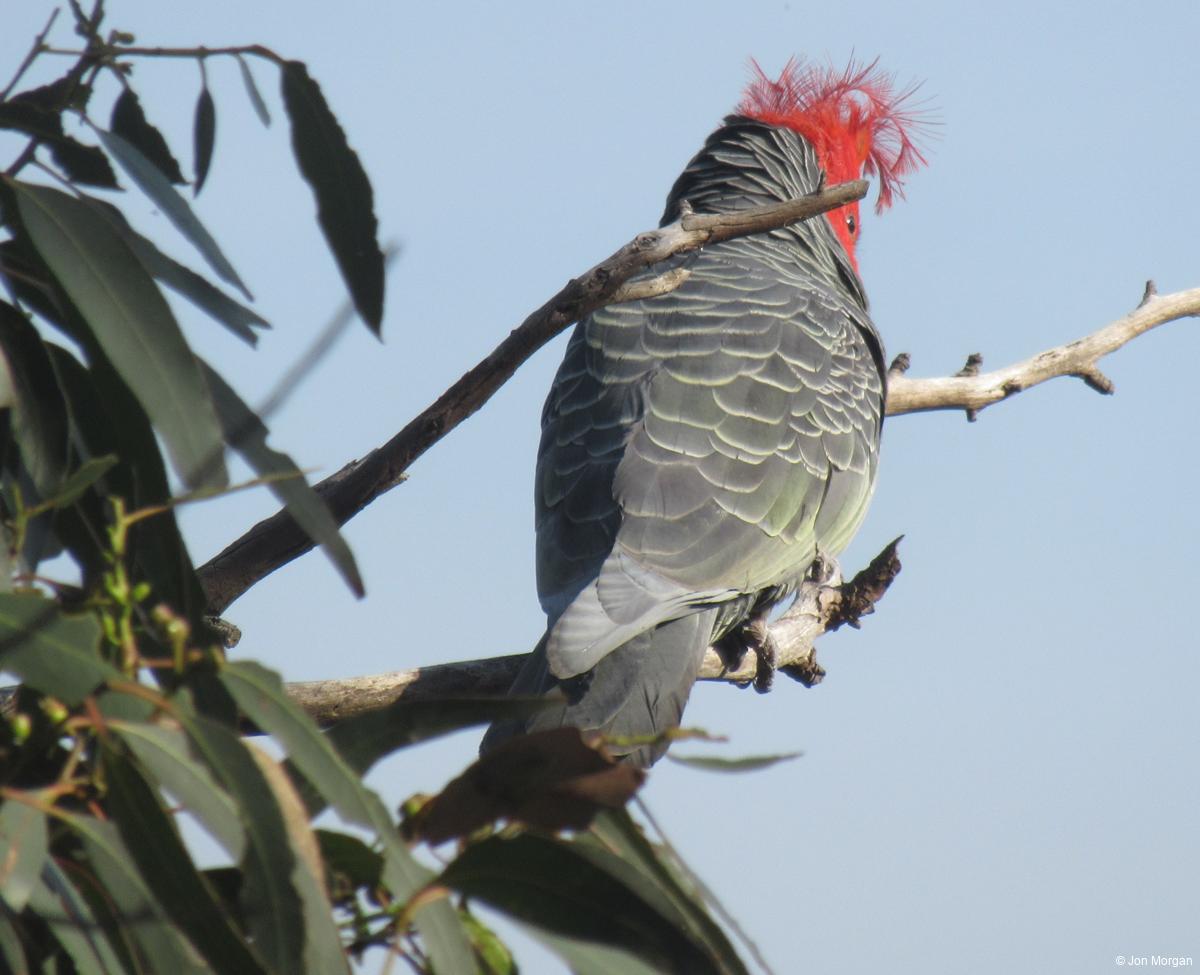
It was right in the trees behind the tent:
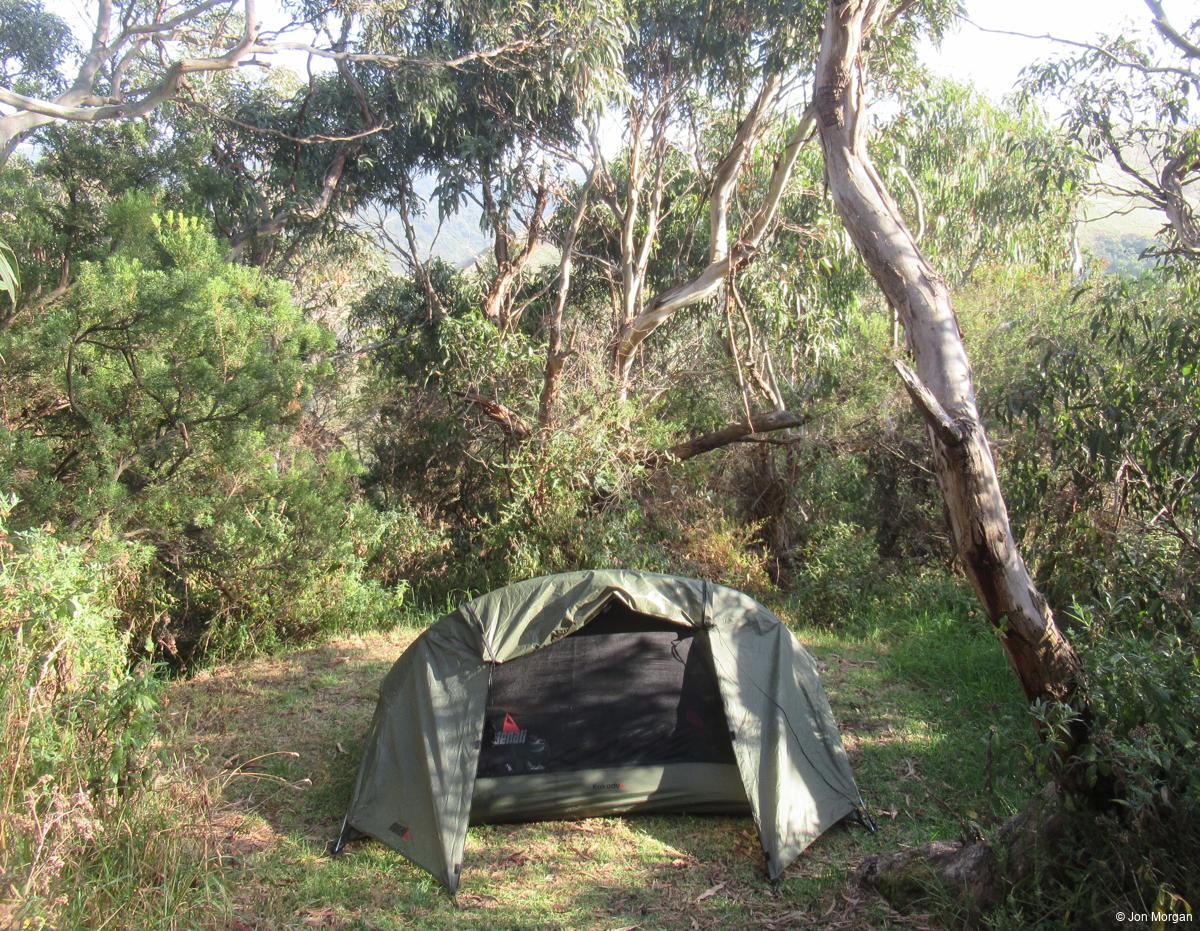
Cleaning up
Here’s one final campsite visitor:

I can only assume it was cleaning up rehydrated food dropped by us messy humans.
The importance of wearing the right socks
I had with me a pair of koala socks, and a pair of kangaroo socks. While wearing the koala socks, I saw a pair of koalas. Perhaps it was cheating, given I’d chosen to put them on because I’d seen koalas the night before, and thus knew where to look, but still, there it was.
I’d seen many wallabies during the walk, but they all seemed more jumpy than my local Dandenong Ranges wallabies. So on the final day I put on my kangaroo socks, and sure enough, soon after leaving the campsite I saw this one:
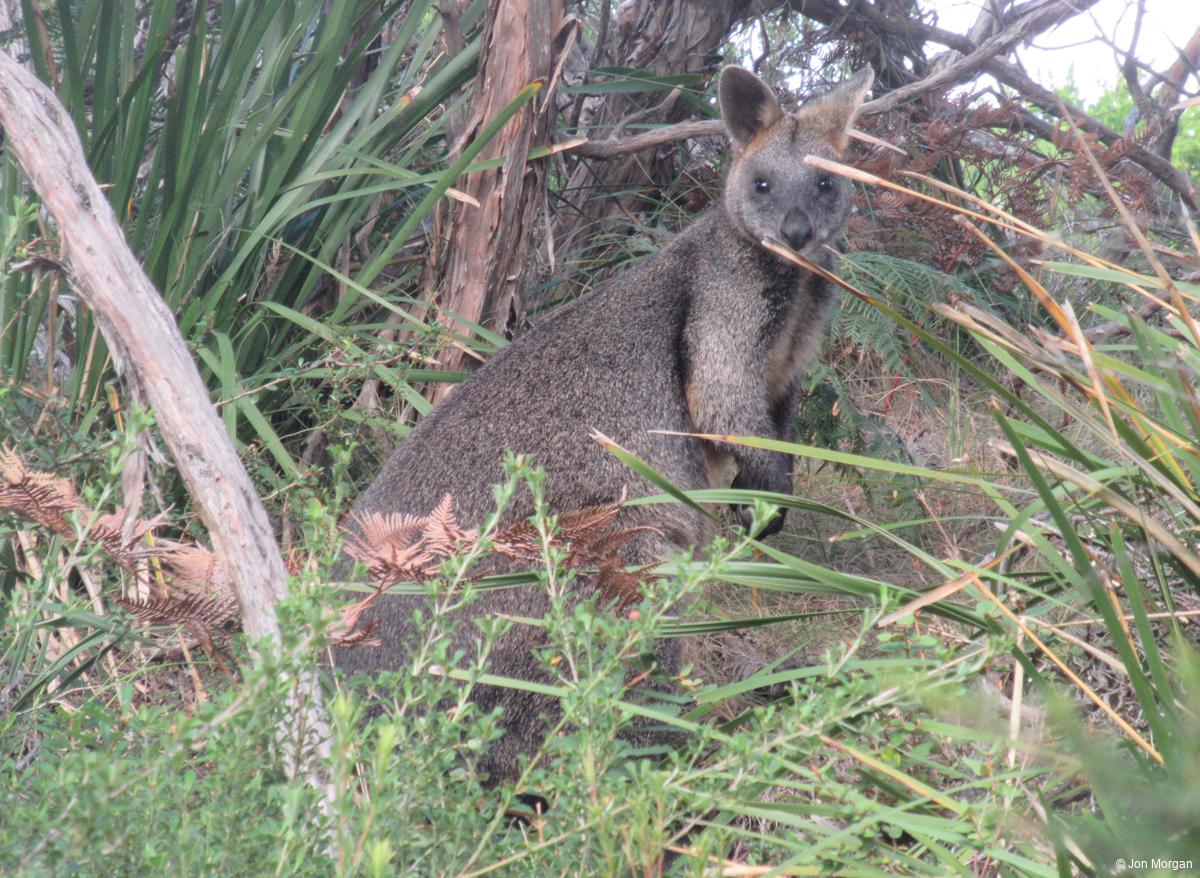
I don’t think it stuck round for a picture - it’s just that when it bounded away it happened to make for a position that gave me a good line of sight.
I’d thought that was the only wallaby picture I got, but it turned out I’d found one on the second day. So here for comparison is the wallaby I saw without wearing lucky socks:
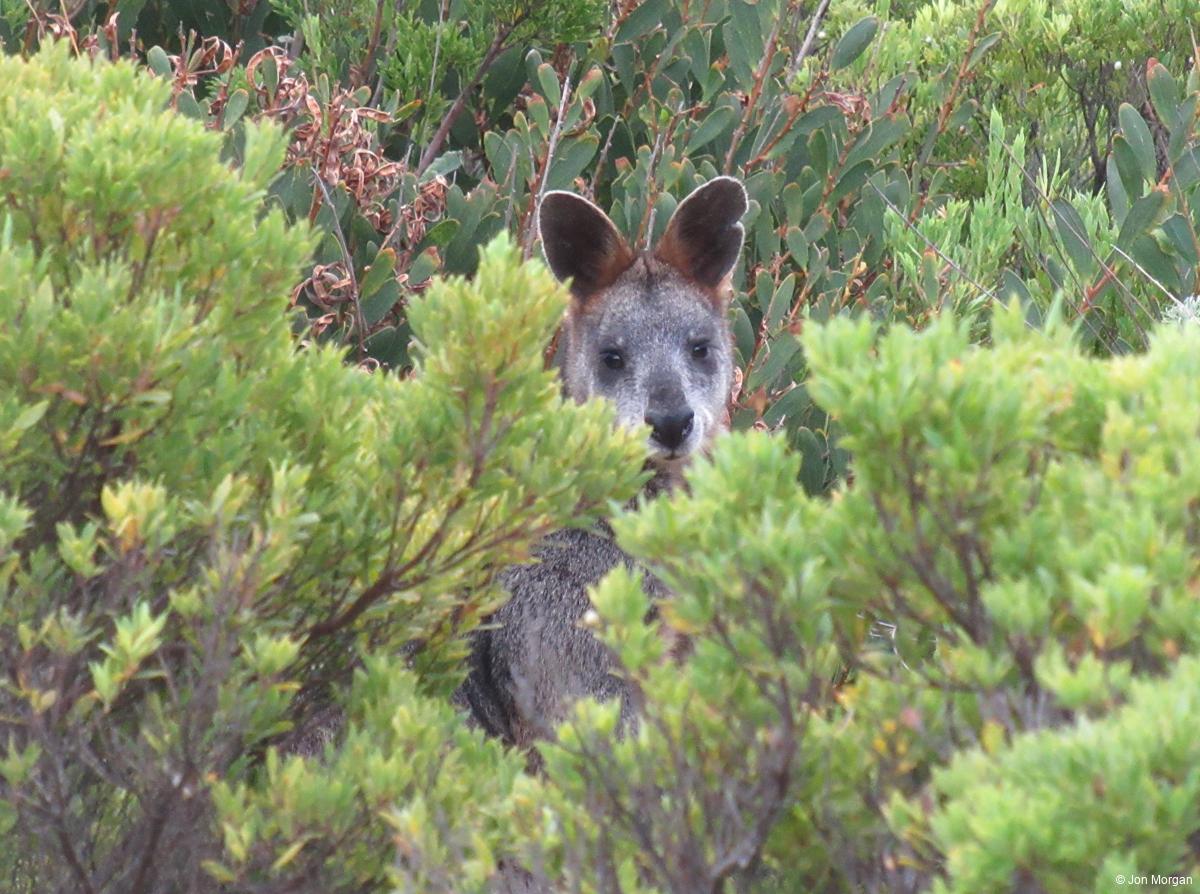
Not exactly going out of its way to be visible…
I’ve never seen a platypus in the wild, though I’d love to. Obviously I just need to find the right pair of platypus socks, and it will happen 😛
Did you say something about dinosaurs?
One of the places almost directly on the route is the historic Cape Otway Lightstation:
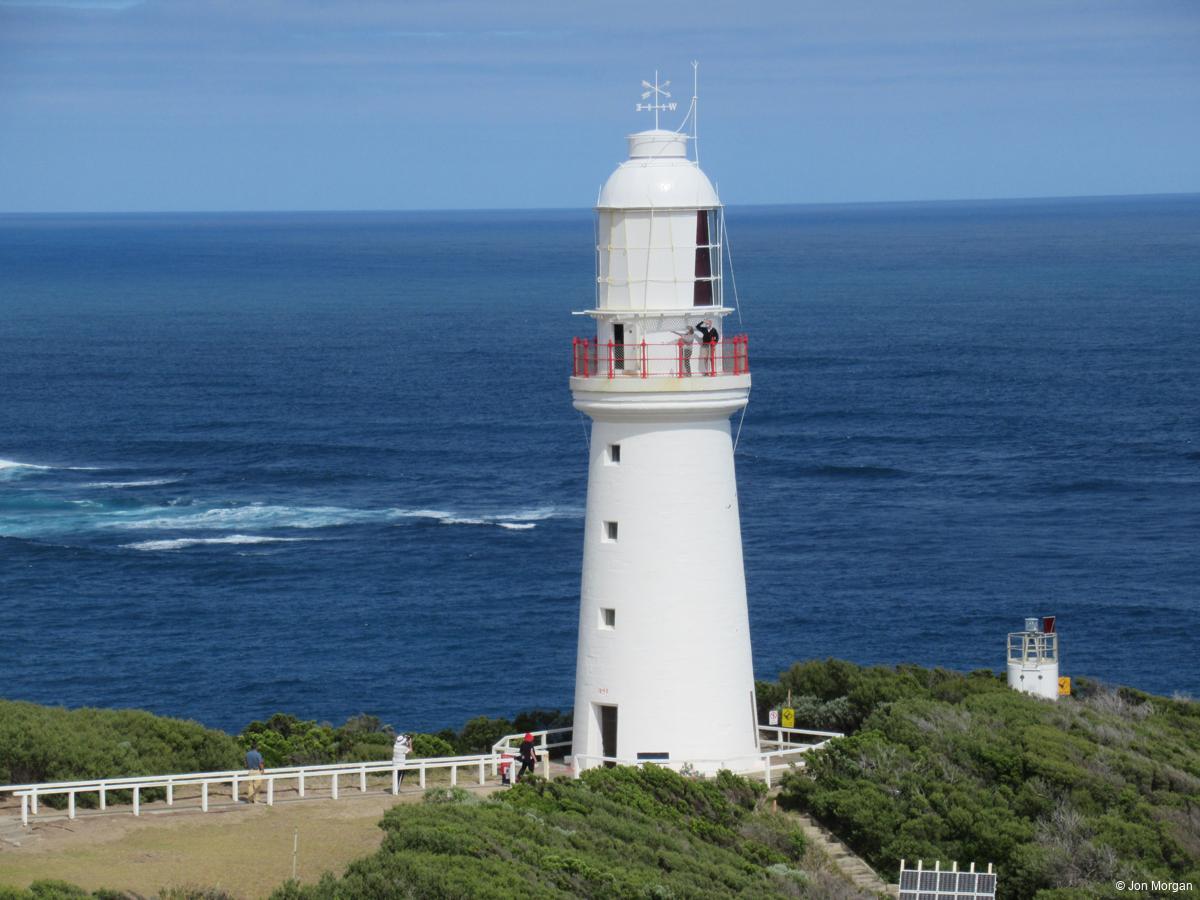
As you can see, it’s possible to climb the lightstation (and it has great views of the waves below!)
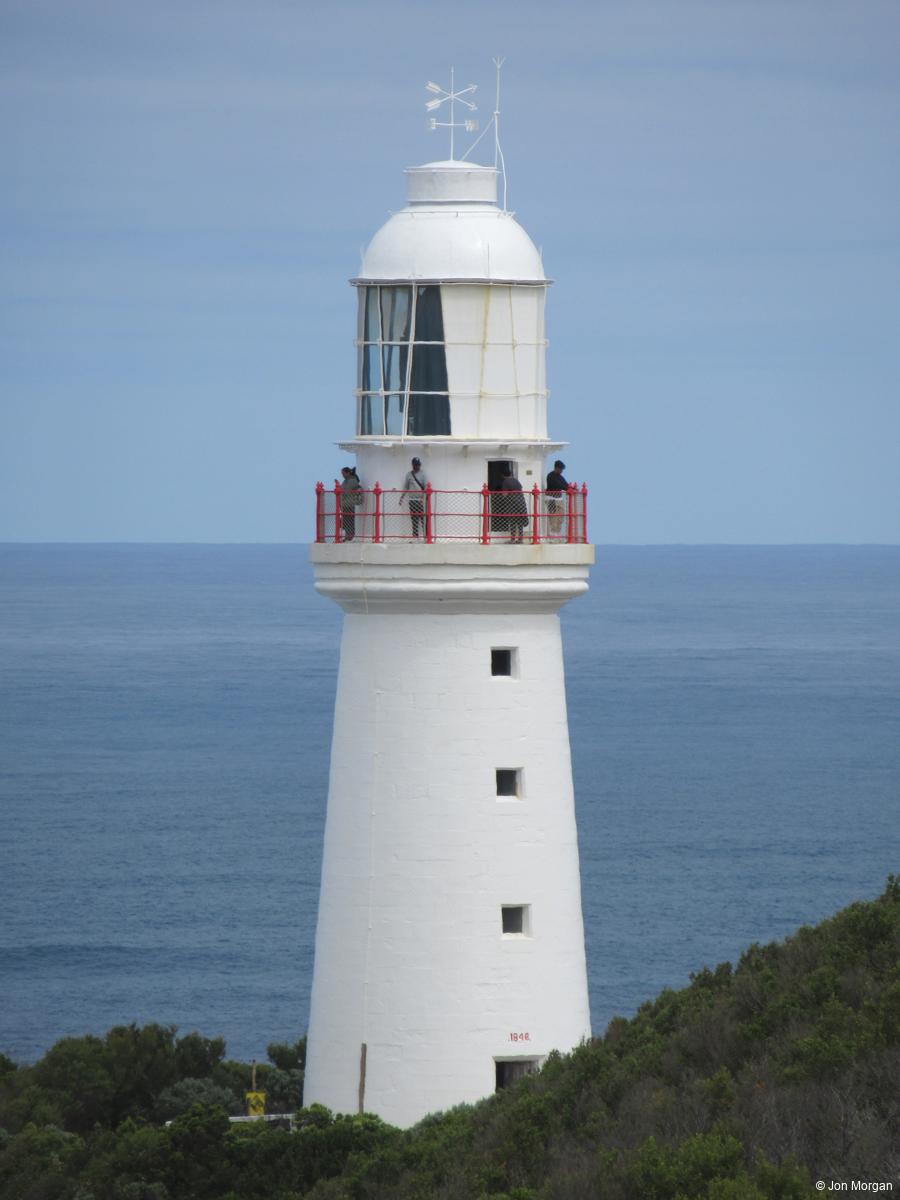
Visiting there also gave me a chance to have some hot food and to recharge my camera (which then got used taking more animal photos…).
But what really drew me there was the history. I’d already been there in 2015 and 2017, but I don’t get tired of it. As well as the lightstation, there’s also a World War 2 era radar bunker, a historic signal station, and information on First Nations foods and culture. Then, stepping back long before the dawn of humanity, there’s a display on our polar dinosaurs:
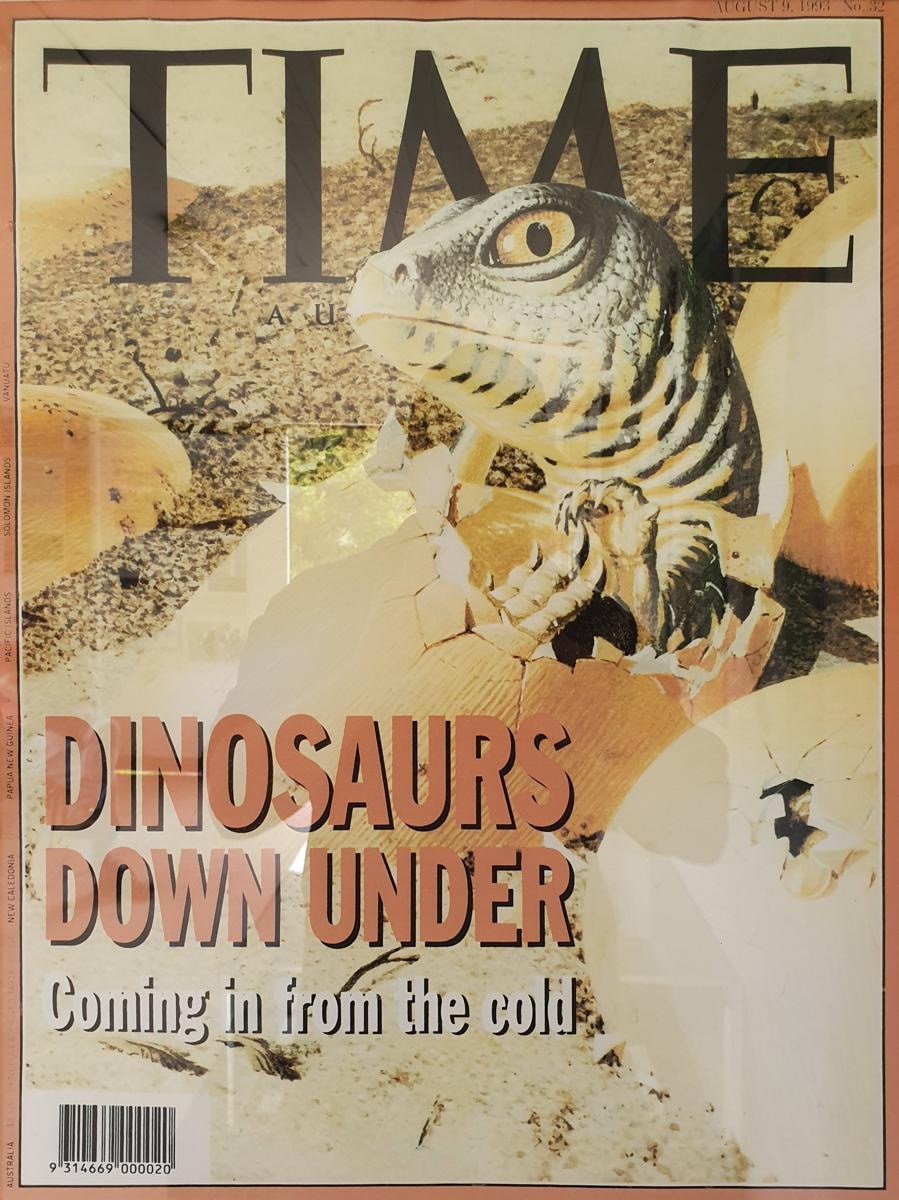
They’re from 110 - 120 million years ago, back when Victoria was inside the Antarctic Circle and still joined to Antarctica. To me it’s a reminder that we’re part of a deep and long-running history. When interacting with birds and animals, it’s mostly in the present - but the past is what made that present. Our present.
Here’s a picture of one of the excavation sites (yes, the ocean was definitely involved).
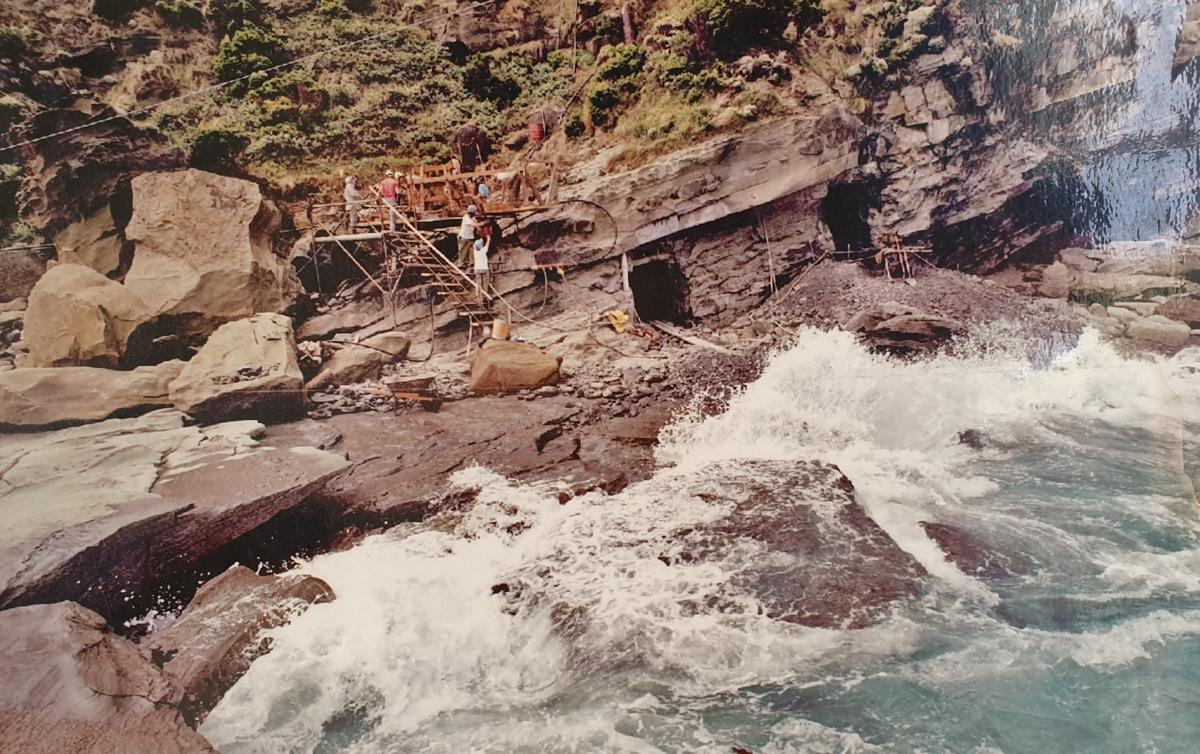
I think that picture is from the original site near Inverloch, but they have found some polar dinosaurs near Cape Otway.
As it turned out, this display wasn’t the only dinosaur I saw on the walk. There was one left at a picnic table at the Blanket Bay hike-in campsite:
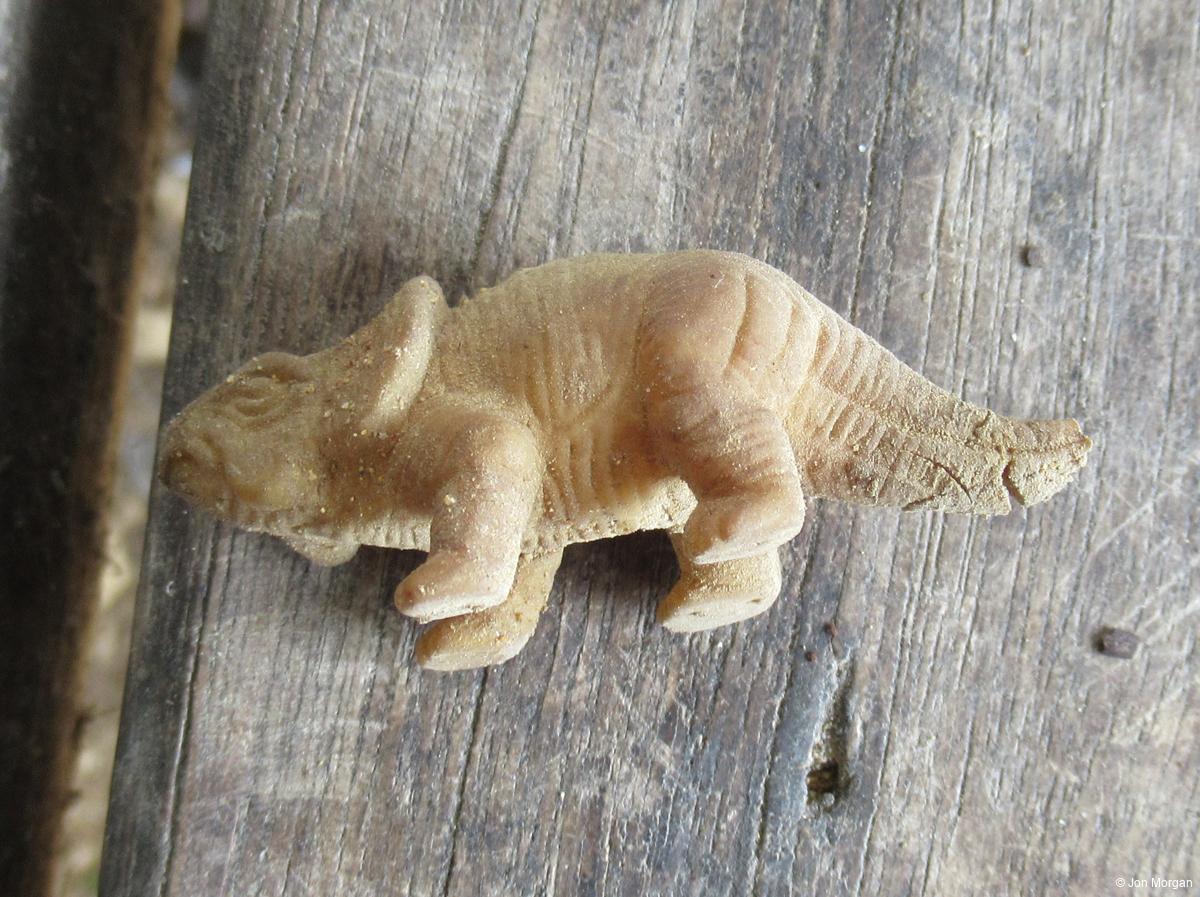
A bunch of birds
Talking about dinosaurs, of course birds are dinosaurs too. And I’ve already shown quite a few birds, but here are the pictures that didn’t fit in an obvious category:
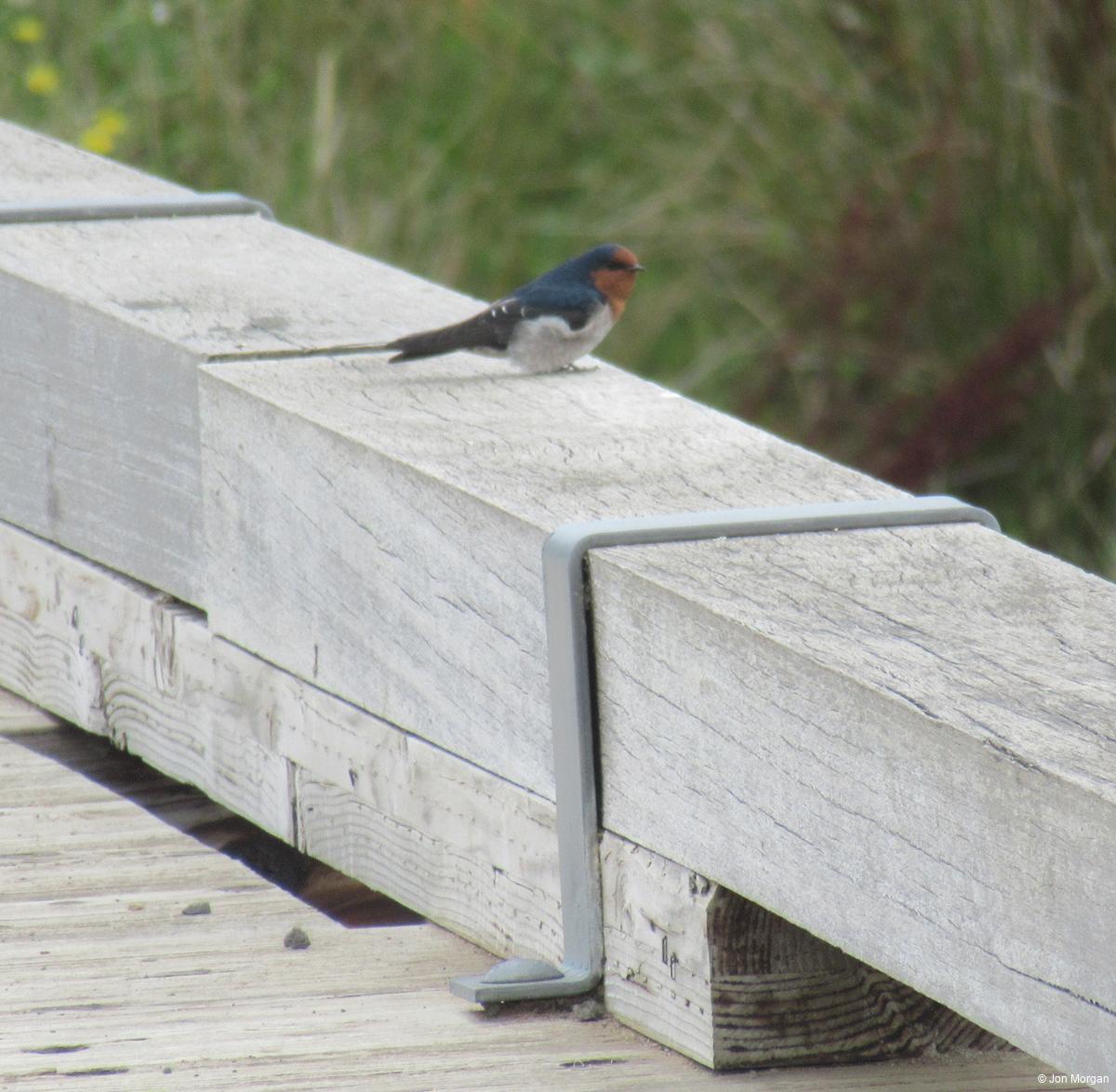
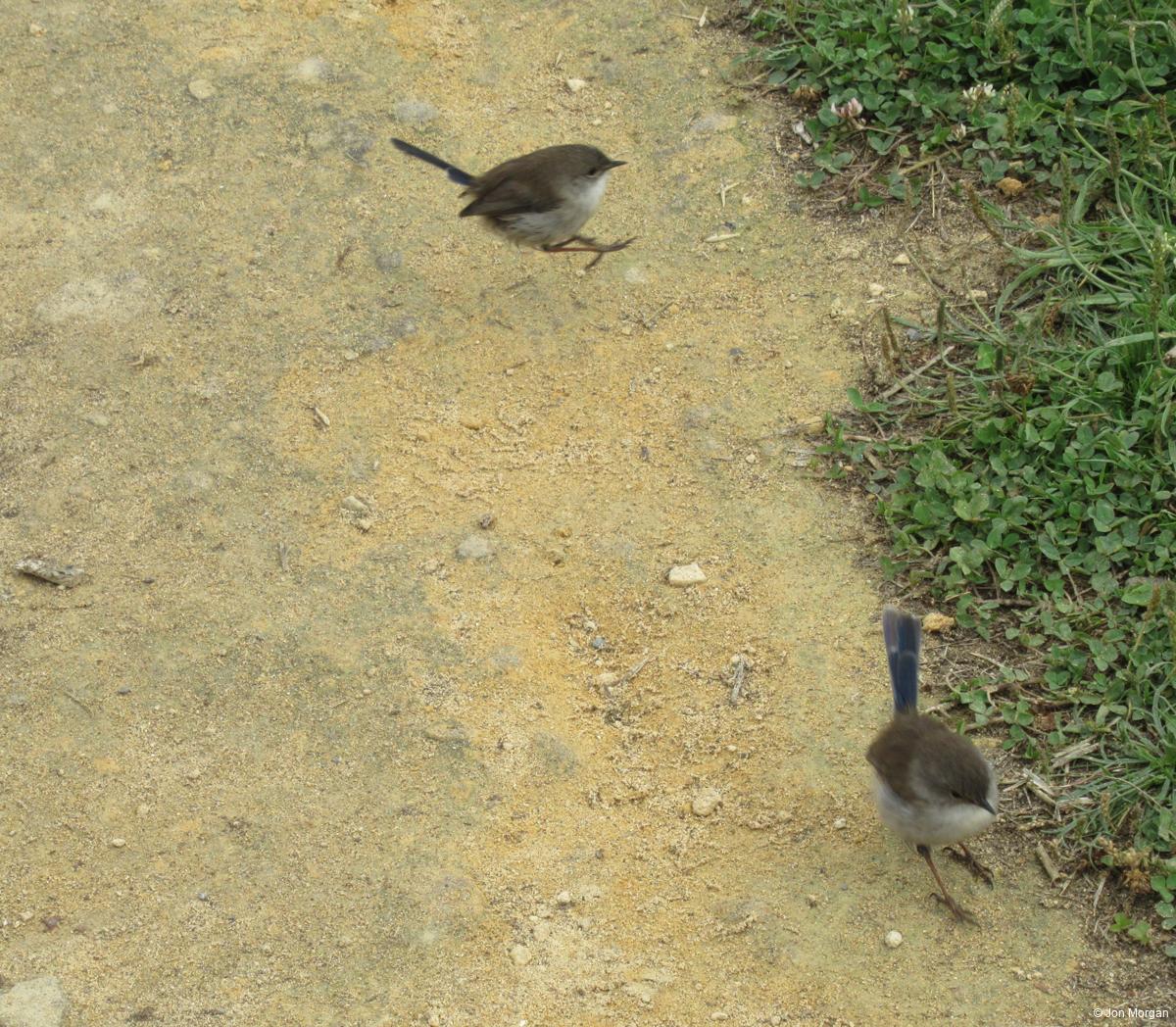
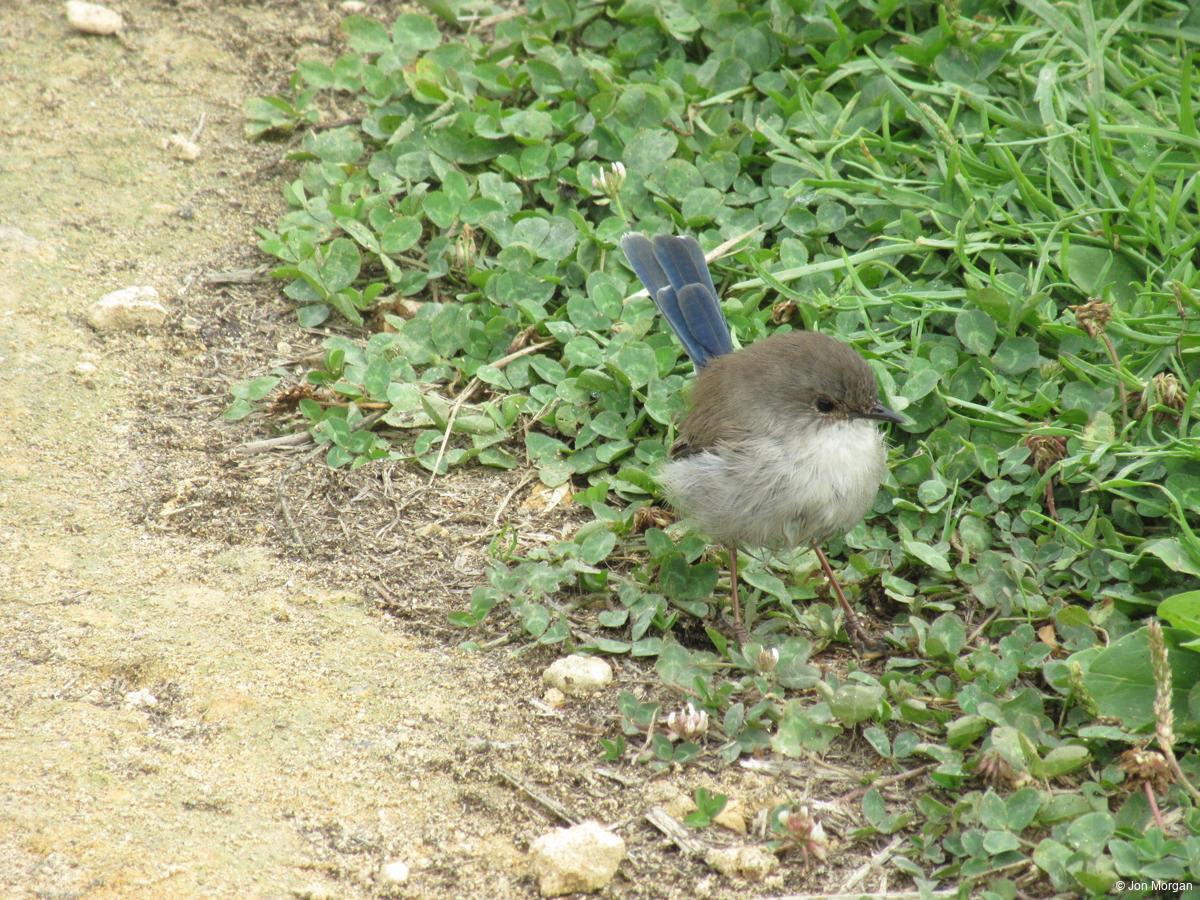
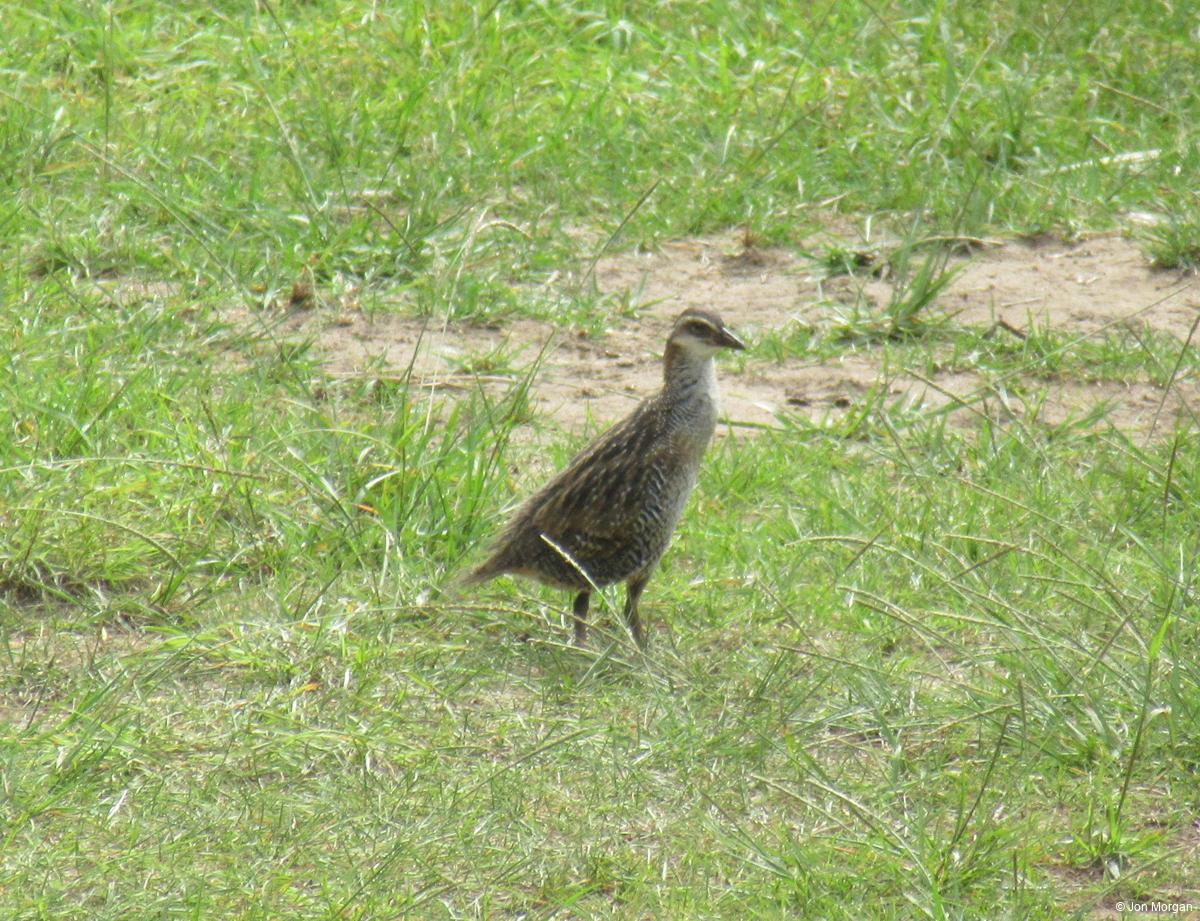
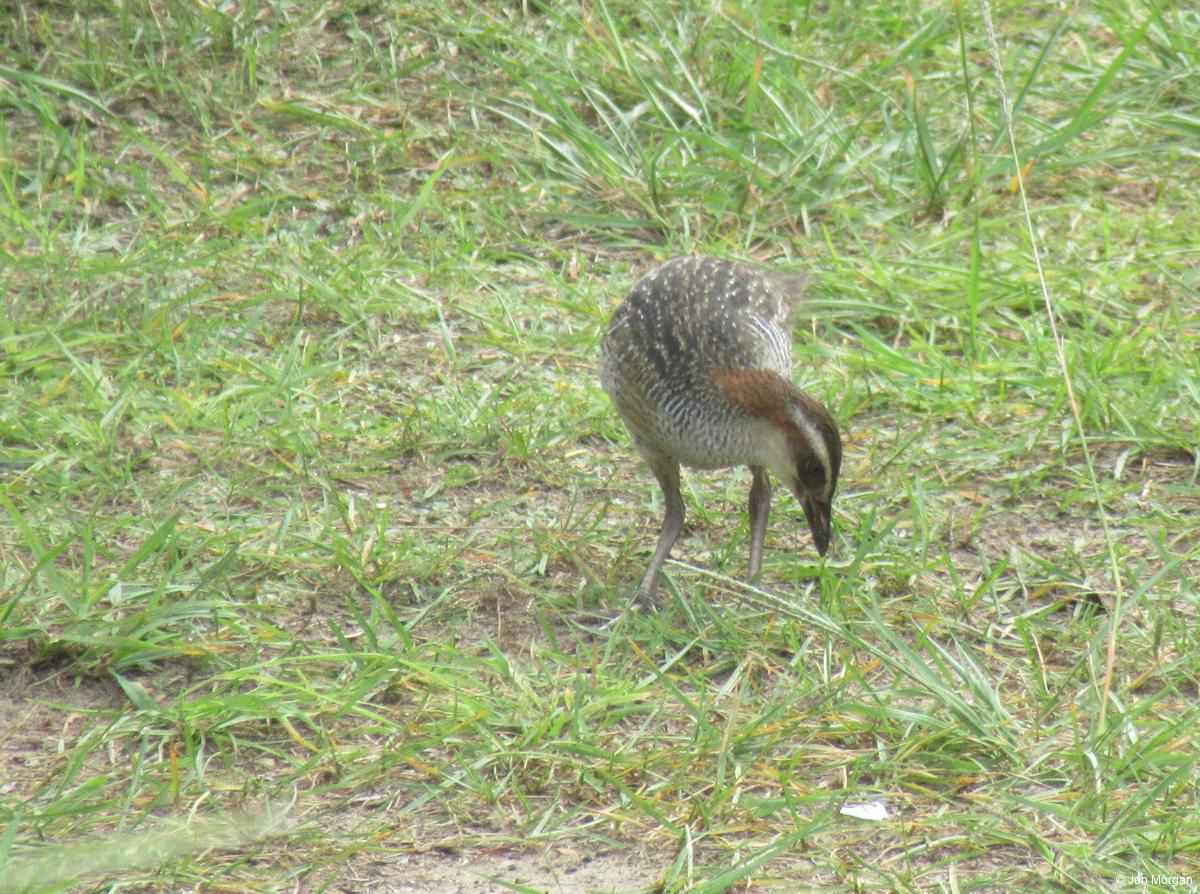
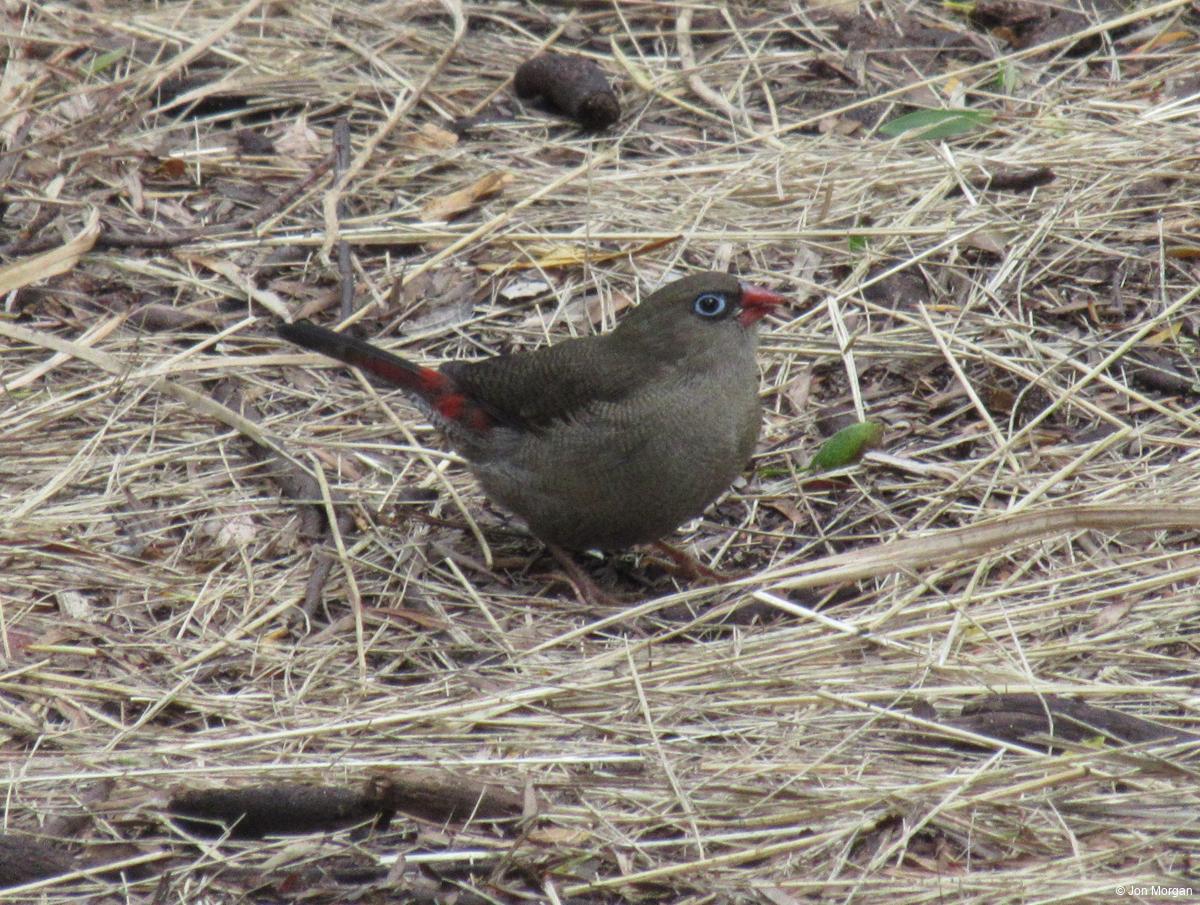
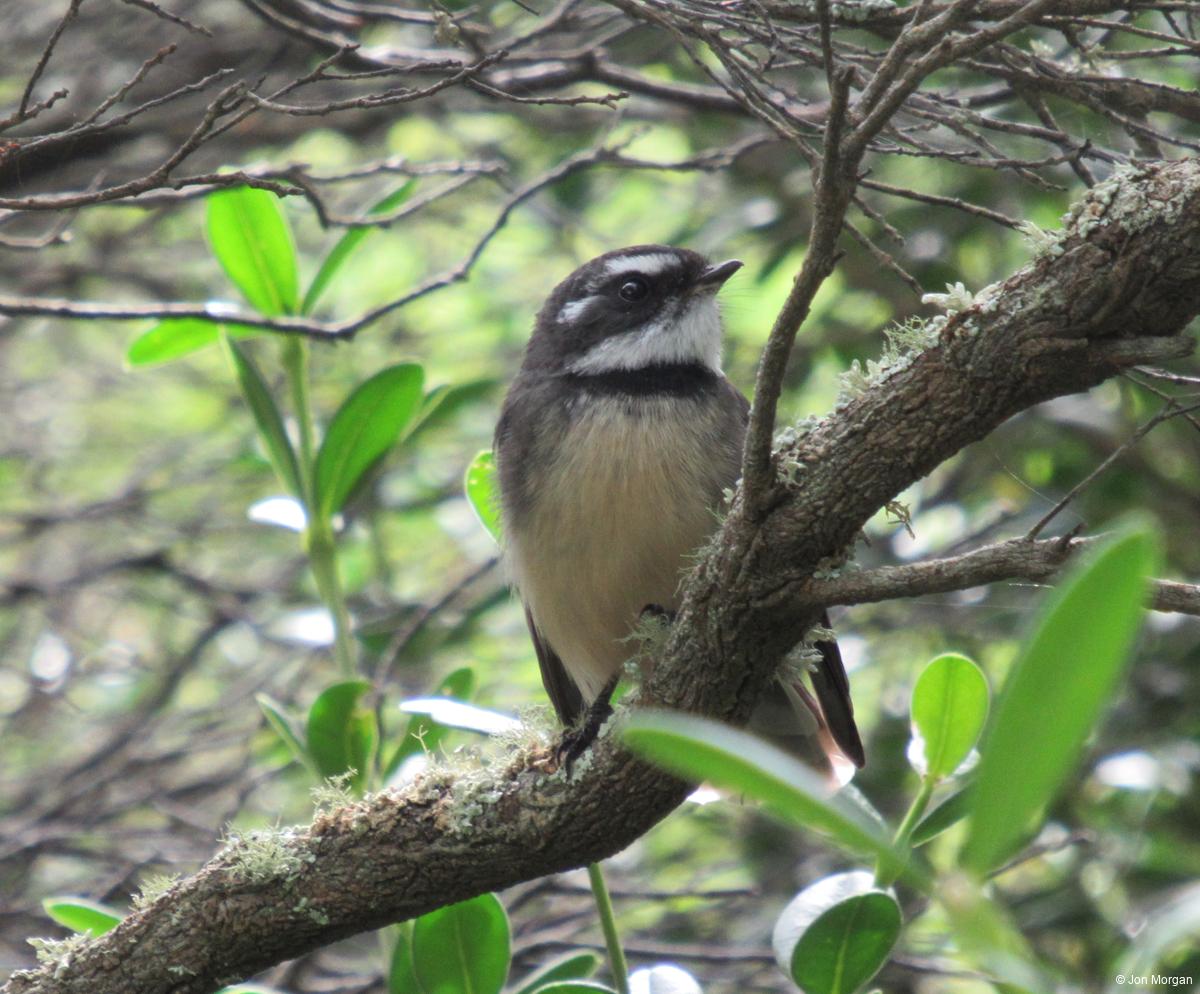
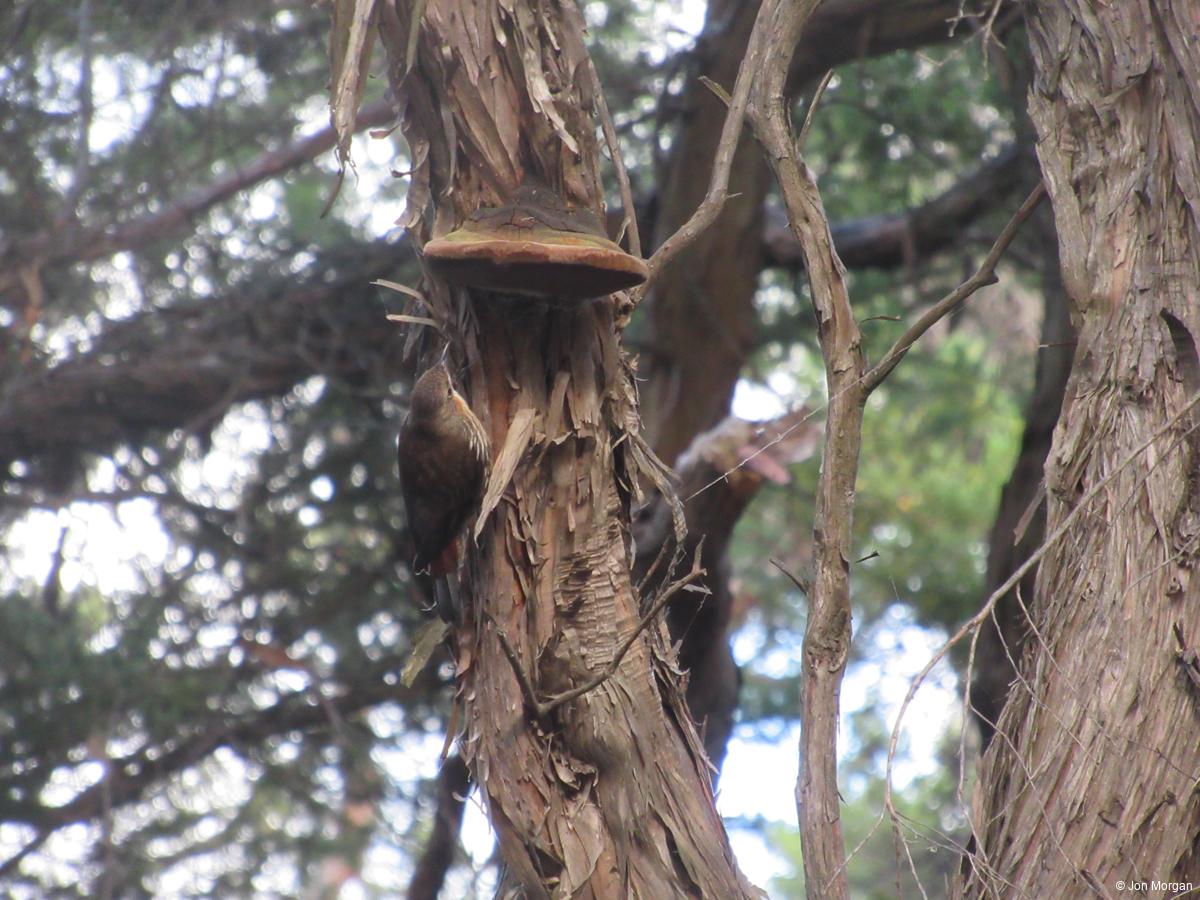
The rescue wallaby
On the trail, I met someone who was carrying a young wallaby in a pouch. I asked about it, and they said the mother had been hit by a car and had to be put down. The baby was being taken care of, and they intended to re-release it in five or six months time. It was a long journey, but it would get there.
A sad story, yes, but a very cute wallaby youngling.
Making enduring memories
In summary, the Great Ocean Walk was a great walk which left me with many enduring memories. And, like so often, many of those memories were interactions with specific birds and animals. I’m glad to be able to share some of them here.